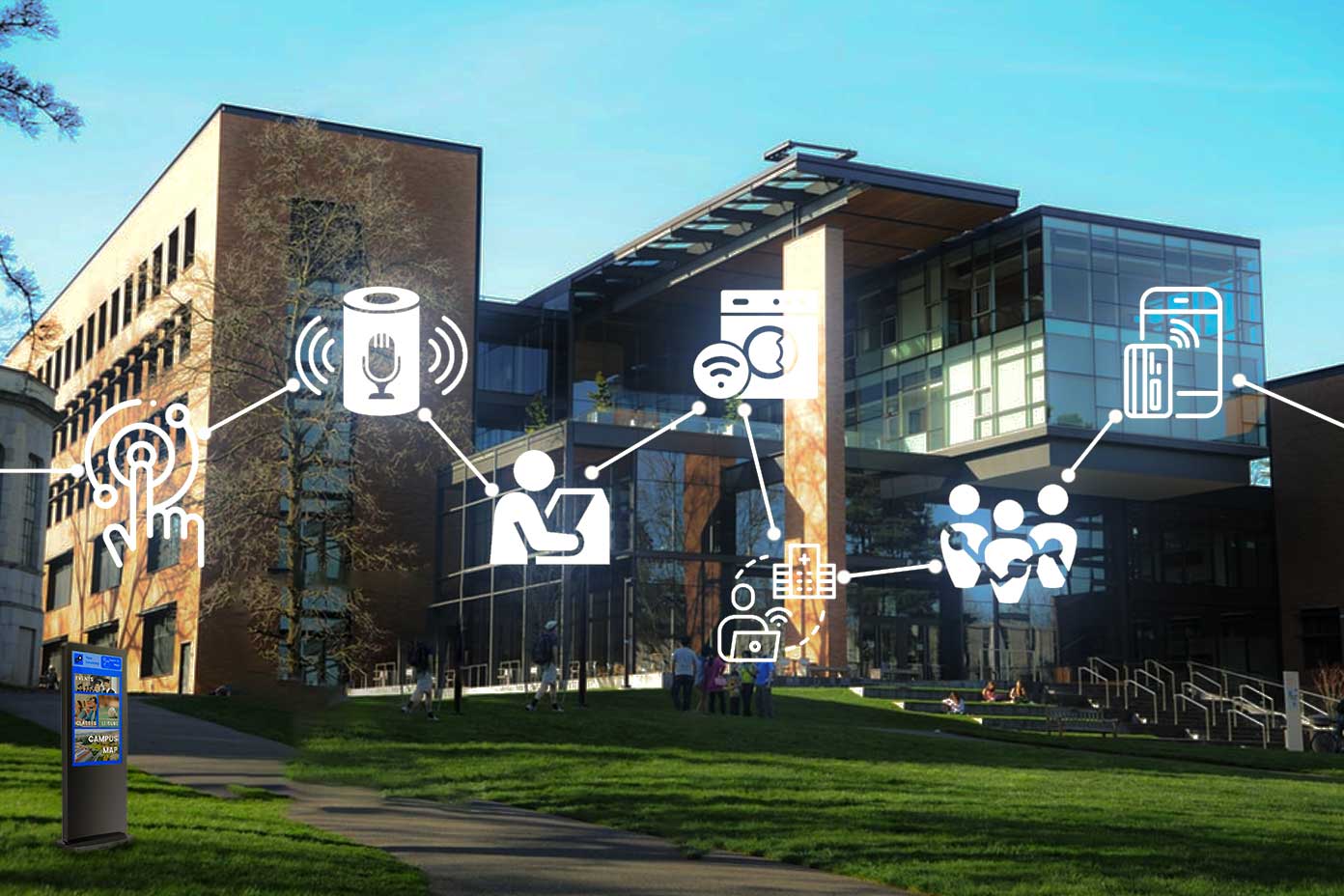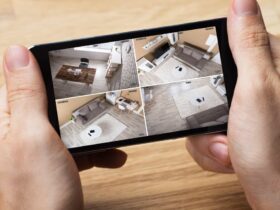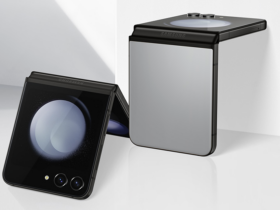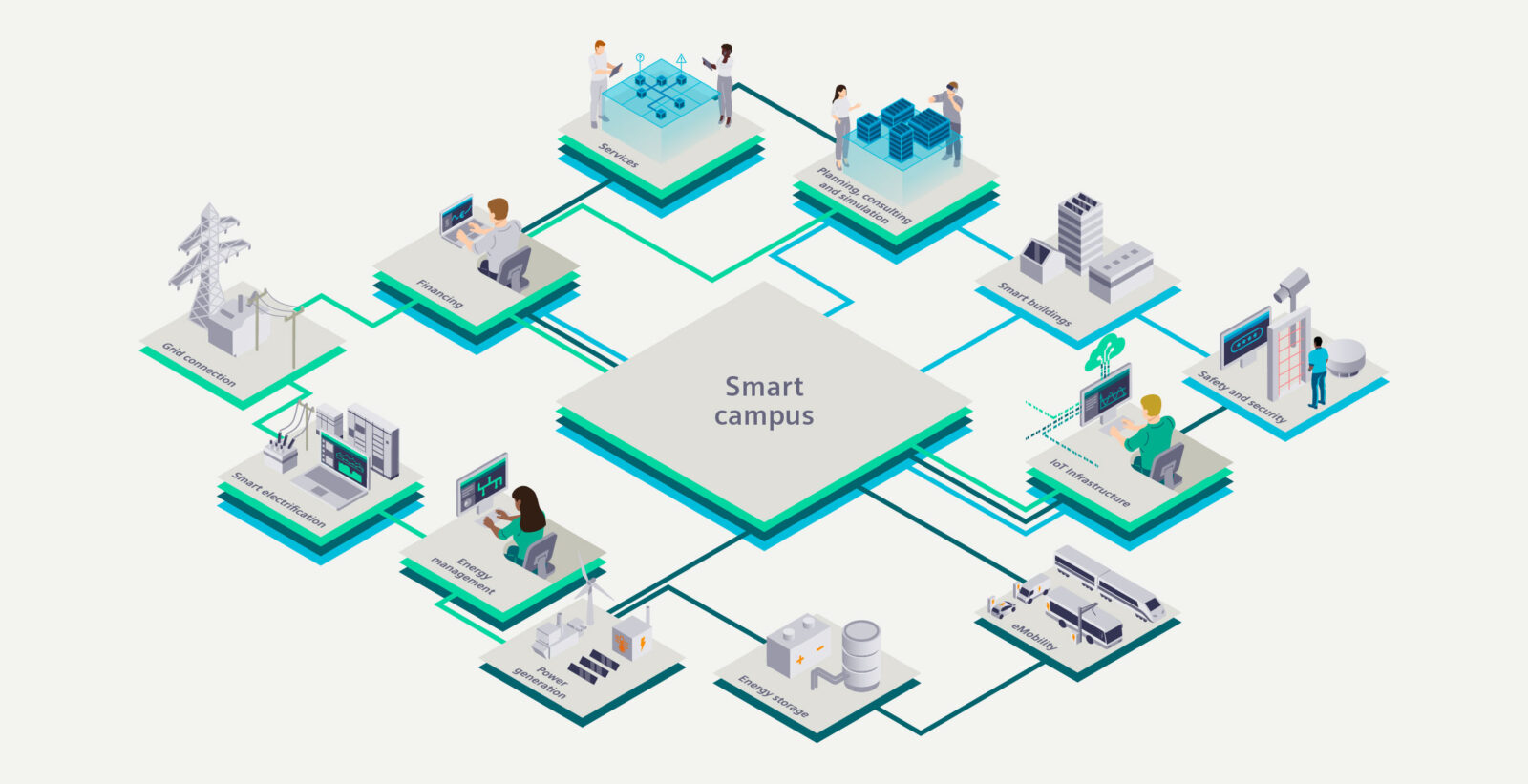Smart Campus
Supportive and interesting activities can be found everywhere throughout a “smart campus,” thanks to the high-tech network infrastructure and internet-connected equipment. It integrates people, machines, and software to help schools make data-driven decisions about safety and efficiency.
Intelligent campuses are one of the top 10 key technologies influencing higher education, according to research firm Gartner. A smart campus is defined by the group as “a physical or digital environment in which humans and technology-enabled systems interact to create more immersive and automated experiences for university stakeholders.” Smart campuses are supported by a combination of wired and wireless infrastructure and hardware at universities. By setting priorities and balancing finances, administrators are better able to realise the smart campus strategy’s intended outcomes. Colleges that implement Wi-Fi, sensor networks, and other Internet of Things technologies can:
Examples of Smart Campus Technologies
Help visitors find available parking spots and provide them access to campus mapping tools.
Proactively resolve operational deficiencies by detecting water leaks or broken equipment.
Improve existing security setups by integrating features like gunshot detectors, facial recognition, and geofencing.
Make use of information to find openings for diverse events or to reassign workers to more fulfilling positions.
Facilitate student learning by providing interactive learning tools and independent study resources.
Keep an eye on the number of people using the gym, the stadium, the dining hall, the dorms, and the classes.
Support efficiency and a human-centered approach by automating student and teacher operations.
Universities Using Smart Campus Applications
Smart campus design is increasingly being emphasised by universities throughout the world as a means to enhance learning results, decrease operating expenses, and future-proof their institutions. Once a university establishes a baseline for wireless and wired services, the sky’s the limit. The following are only a few of the hundreds of initiatives that universities have undertaken.
The ASU commencement app was recently used during a virtual graduation ceremony at Arizona State University. The augmented reality experiences it provided made the students feel like they were actually there.
Realcomm has recognised the University of Nebraska-Lincoln as the Most Intelligent Campus in Higher Education for 2020. The facility also offers “cost-effective and tech-enabled state-of-the-art hybrid classrooms” along with its other features.
A smart campus was introduced in 2016 at California State University, Long Beach. The intelligent campus plan implemented wireless internet access in student residence halls, digital signage for campus news and safety alerts, and digital wayfinding to help students and staff get across campus.

5 Benefits of Smart Campus Design
There are numerous benefits for educational institutions that provide the groundwork for internet-connected services and leave potential for expansion. Technology partners, such as your internet service provider, can be useful for both short-term problem solving and long-term investment planning.
As of May 1st, 2020, only 26% of institutions had reached their enrollment goals. The lowest number in some years. Despite fluctuations in enrollment due to one-off factors, universities still have a responsibility to create conducive places for teaching, living, and research. This allows universities to set themselves apart from competitors, enhance internal efficiencies, and boost revenue.
1. Improves Student Experiences
College campuses are expected to provide internet connections on par with what students have at home. Colleges today recognise the importance of offering students who are constantly connected to the internet a convenient, safe, and individualised campus experience. Some applications of “smart campus” technology are:
Interactive voice response
Intelligent washers and dryers
Online medical care
Foodservice Kiosks
Acceptance of mobile and contactless payments
In-situ occupancy monitoring systems
Accessibility is also very important. Students should be able to go wherever they choose on campus and rely on services that are straightforward and simple to use. The year 2020 has shown us that we need to make immediate changes to our on-campus offerings to better serve our students who live and study elsewhere. Colleges and universities must ensure that students have the same learning experiences whether they attend class on campus, online, or in a satellite location.
Smart campus technologies that prioritise the user experience improve students’ access, safety, and well-being. Learners are able to make their classrooms and homes uniquely their own because of the convergence of immersive, automated, and interactive technologies.
2. Enhances College Campus Safety
Campus safety has improved somewhat over the past two decades, but it is still an issue at many universities. The days of relying solely on well-lit areas and frequent security patrols to ensure the safety of students (and their families) are over.
Students and their families can rest easy with the help of online security services. Campuses with smart solutions have lower crime rates and higher levels of campus awareness. Universities can implement smart technology for the safety of their facilities and students if they have access to secure networked systems.
Secure smart campuses employ devices like:
Students and faculty can use location-based services to safely navigate the nighttime commute to and from campus.
To safeguard expensive investments, wireless sensors track where they are and how they are being used.
The use of smart locks, geofencing, and smart ID cards makes regulating who can enter a building a breeze.
People can be rapidly evacuated from dangerous situations thanks to digital signage and kiosks.
IP cameras with intelligence transmit information and warnings to help keep buildings safe.

3. Reduces Operational Costs
Administrators can save money by integrating smart technologies into buildings and utilities. Tools for automating administrative tasks, for instance, provide college administrators more time and energy to devote to other priorities.
Putting sensors in your heating and cooling system, lighting, and other appliances can help you automate your home’s energy consumption. Maintenance needs, such as the replacement of light bulbs before they burn out, can be easily identified in a networked setting, and staff can be sent out to do the task quickly and effectively.
4. Supports Data-Based Decisions
Decisions in education must be data-driven and flexible. Data collected from a smart campus design can be put to use immediately and across the board. Advisors can use aggregate usage statistics instead of isolated pieces of information to:
Transportation timetables and routes should be optimised in light of passenger usage.
Find ways to increase current revenue.
Gain understanding by analysing user actions in context.
5. Boosts University Reputation
Every component of a high-tech university boosts the institution’s standing. Your institution has a leg up on the competition because to its increased safety precautions, proactive student support services, and cutting-edge teaching methods.
The constant connectivity of today’s students also makes it simple for your institution to gather UGC for promotional and outreach purposes.
Discover the College Campus of the Future
The best partner can help you develop a smart campus plan by bringing together your knowledge of higher education requirements and their expertise in networking and technology integration. Invest in flexible, modern design that can grow with your school to ensure its readiness for the future.

















Leave a Reply